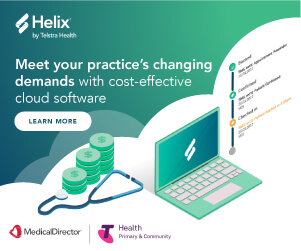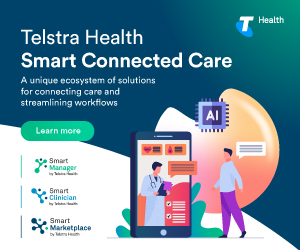Are you ready for the new era of digital wellness?
‘Digital wellness’ and wearables are continuing to play a bigger part in our every day lives, but how will this new digital age of wellness impact healthcare? MedicalDirector’s CEO, Matthew Bardsley, discusses.
Imagine your next patient coming into your clinic, armed with their smartphone and wellness wearables, relaying to you a flurry of information about their weight, diet, fitness, blood pressure and symptoms, then wanting to share it all with you in real-time. But your own clinical software simply can’t keep up tracking or recording the same information. Your patient becomes frustrated – and so do you.
With the rise of health and fitness apps, smartwatches and wearables, ‘digital wellness’ is continuing to play a bigger part in our every day lives. And with Apple and Google now pushing their vision of wearable computing into the sector, the question now is, how will this new digital age of wellness impact healthcare?
Before the wellness digital age, focusing on our personal, everyday ‘wellness’ offline, meant a general ad hoc tracking of simple data points like our weight, blood pressure, fitness and diet. If illness or injury hit, we’d be able to share this information with our healthcare provider, but usually in a relatively rough, unstructured way.
Now, the proliferation of digital wellness devices and apps has signalled a new era in more individuals closely tracking their fitness and health than ever before. In fact, a recent report from Flurry Analytics, found health and fitness app usage have become increasingly popular, growing over 330% in just 3 years.
Interestingly, the report also showed significant increase in engagement with these apps, with three quarters of active users opening their health and fitness app at least twice a week, and over a quarter of users accessing their fitness apps over 10 times a week.
Data-rich patients and the era of information asymmetry
As a result of this increased wellness digital usage, individual users now have a wealth of data on their own wellbeing at their fingertips, making them far more empowered and equipped to track and monitor their own health and to some extent, even self-diagnose. Technology is now not only giving people incentive to become more deeply involved and interested in their own health, but they can easily share these data sets with their health practitioners in a far more accurate and structured way.
This means for the first time, the information asymmetry is changing where digitally agile patients will now have far more personal health tracking data on their own devices than their practitioner has on file. And it’s nothing to be afraid of. In fact, there are many mid-term and long-term benefits.
In the short to mid-term, patients that can easily share this wellness data with their practitioners can help save a lot of time in diagnosis and monitoring their health. This can leaving open more time for medical professionals to spend on more complex medical issues, while opening up more resources to be spent on chronic health, which is currently a significant cost burden on the healthcare sector.
In the long-term, increased education in the healthcare sector about ways in which patients and practitioners can better leverage technology to optimise and share wellness data can open up a fresh wave of opportunities to enable more ideal healthcare and a more patient-centric approach.
The future looks promising. The digitally enabled practitioner will be able to see their next patient, well-equipped with the same wealth of data that the patient has on their own wellness apps and devices – and more. The clinical visit will be more open, accurate and efficient, while the patient and practitioner relationship will become more trusting, personalised and transparent.
This article authored by Matthew Bardsley originally appeared on LinkedIn.









